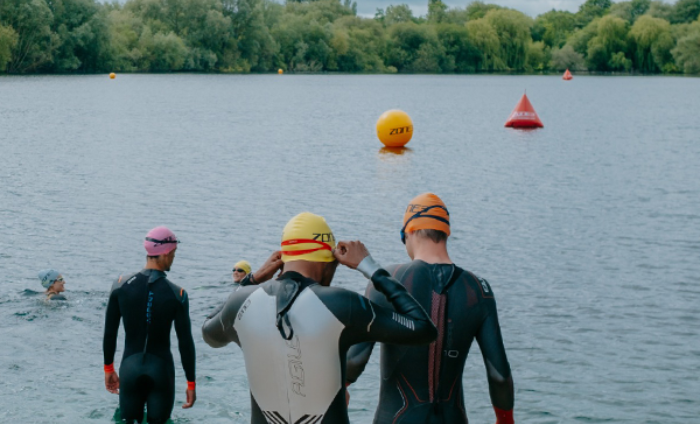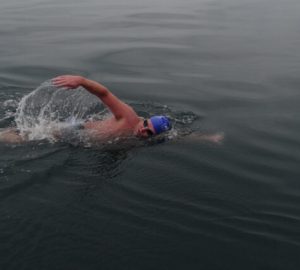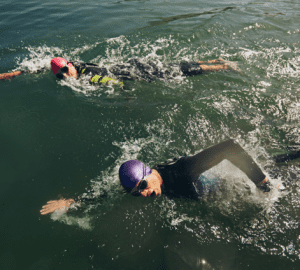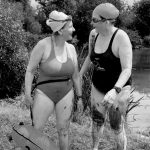
Take your pool training outdoors
Finish your swim at any open water venue and the first question you will be asked is: “How many laps did you do?”
While it is tempting to do long swims consisting of entire laps of a lake, if you want to improve your fitness and open water skills, it is a good idea to introduce some interval training and open water technique practice into your open water swims.
While long steady swims should form part of your training schedule, you will also benefit from some structured speed and threshold sessions incorporating open water skills.
These are easily incorporated into your swims, especially if you are familiar with the venue you swim at. Turning up for your swim with a training goal in mind will motivate you and make your swim more interesting and worthwhile.
Set the pace
You should structure your open water training sessions in the same way as you would a pool session, with warm-up and cool-down swims. The main difference between training in a pool and in open water if you are used to pool training is the lack of a pace clock. However, this can be partly overcome by using a waterproof wristwatch and also by thinking less of time and more of effort.
An easy and measurable way to improve your fitness is to time your laps of your local venue. Establishing personal bests is a good way to motivate you as you watch your times improve and fitness levels increase.
Introduce long interval training into your sessions by swimming one lap hard, one lap easy. Take note of your first hard lap time and try to maintain this throughout your session – this will improve your pacing as well as fitness.
Speed play
If you are familiar with fartlek training in running, this is an easy way to incorporate speed and interval work into your swimming. Fartlek is Swedish for “speed play” – so instead of set intervals with set recovery, fartlek is unstructured and alternates between moderate to hard efforts with easy efforts throughout as active recovery.
Play with speed by swimming hard for short periods of time followed by easy-effort swimming to recover. For example, swim hard to the first buoy, easy to the oak tree, hard to overtake the swimmer in the pink hat, easy to the second buoy. Use the features and course of your venue (including other swimmers) to create a fun but challenging workout. This is my favourite kind of open water speed training – its random nature and the mental stamina involved make it good for mind and body!
Different strokes
It is also a good idea to introduce other strokes into your open water training. Intervals of breaststroke (or even butterfly if you are feeling brave) will work different muscles, improve your front crawl, and also provide interest from endless laps of freestyle.
Open water skills:
Deep water starts
Tread water while waiting for (imagined) race start. Manoeuvre into a horizontal position, hands sculling, gently kicking, head out the water. Practise a quick transition into front crawl swimming using a strong kick and arm stroke.
Buoy turns
A good skill to perfect – especially while swimming intervals at speed. While inexperienced swimmers often give buoys a wide berth, an efficient and quick buoy turn should be made as close to the buoy as possible. Practise superman and backstroke turns. Think about each turn and when it would be most appropriate to use it.
Sighting
Practise sighting on an immoveable object (eg, a tree beyond a buoy). Don’t sight on vans or ducks – they move! Use ‘crocodile eyes’ and practise sighting every three breaths to get used to sighting on both sides.
Goggle adjustment
Everyone’s goggles steam up at some point! If it happens in a race you want to be able to clear them quickly. Practise turning onto your back into a seated position, fluttering your legs. Clear goggles by immersing in water. Turn back onto your front and swim off.








